'A lot of hope': US Forest Service announces plans to protect giant sequoias from wildfires
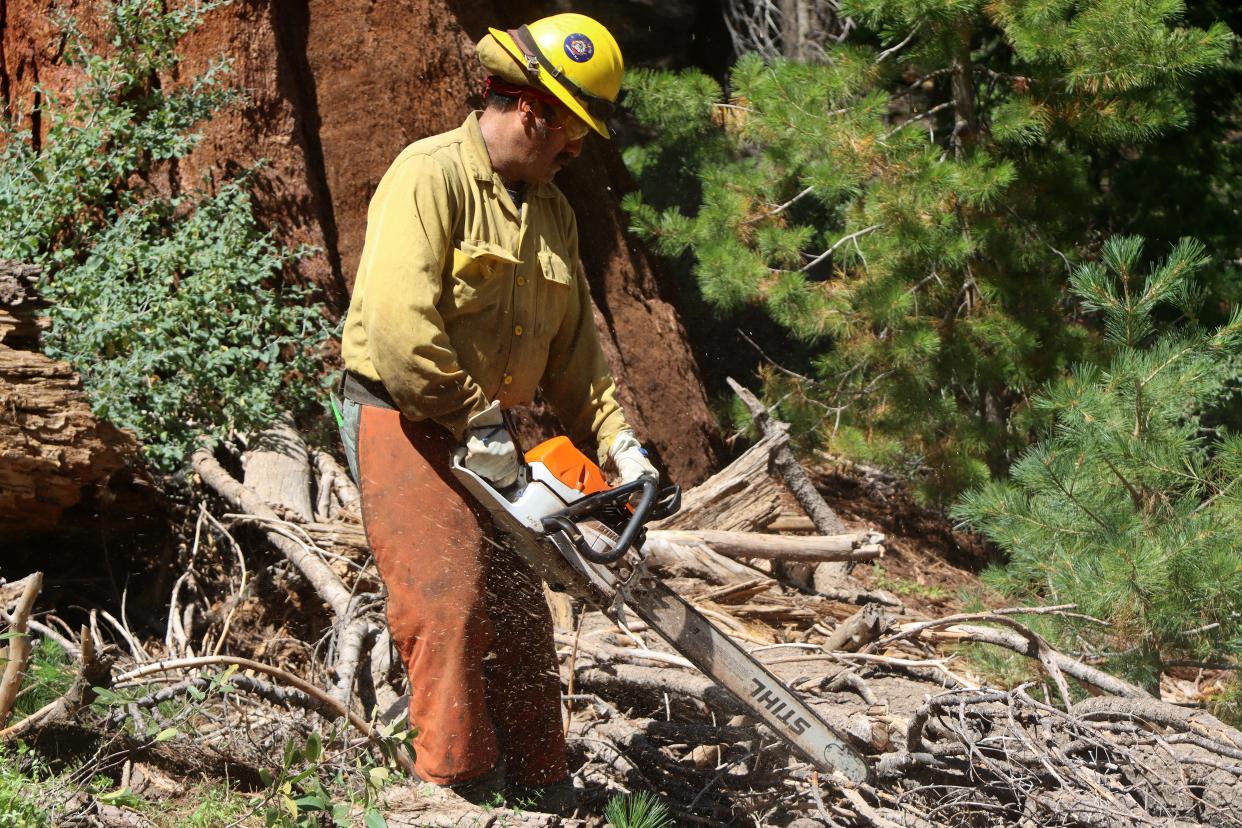
Hundreds of acres and thousands of giant monarch trees in the Sequoia National Forest were lost following month-long fires over the last two years, prompting the U.S. Forest Service to come up with a plan to protect the trees that still remain.
The Giant Sequoia Emergency Response was announced this week, specifically aimed at reducing the wildfire risk currently threatening the giant sequoia groves throughout California.
“By reducing the potential for mortality... and taking the actions we are taking now,” Sequoia National Forest Supervisor Teresa Benson said, “we will protect the people, our communities and our land for generations to come.”
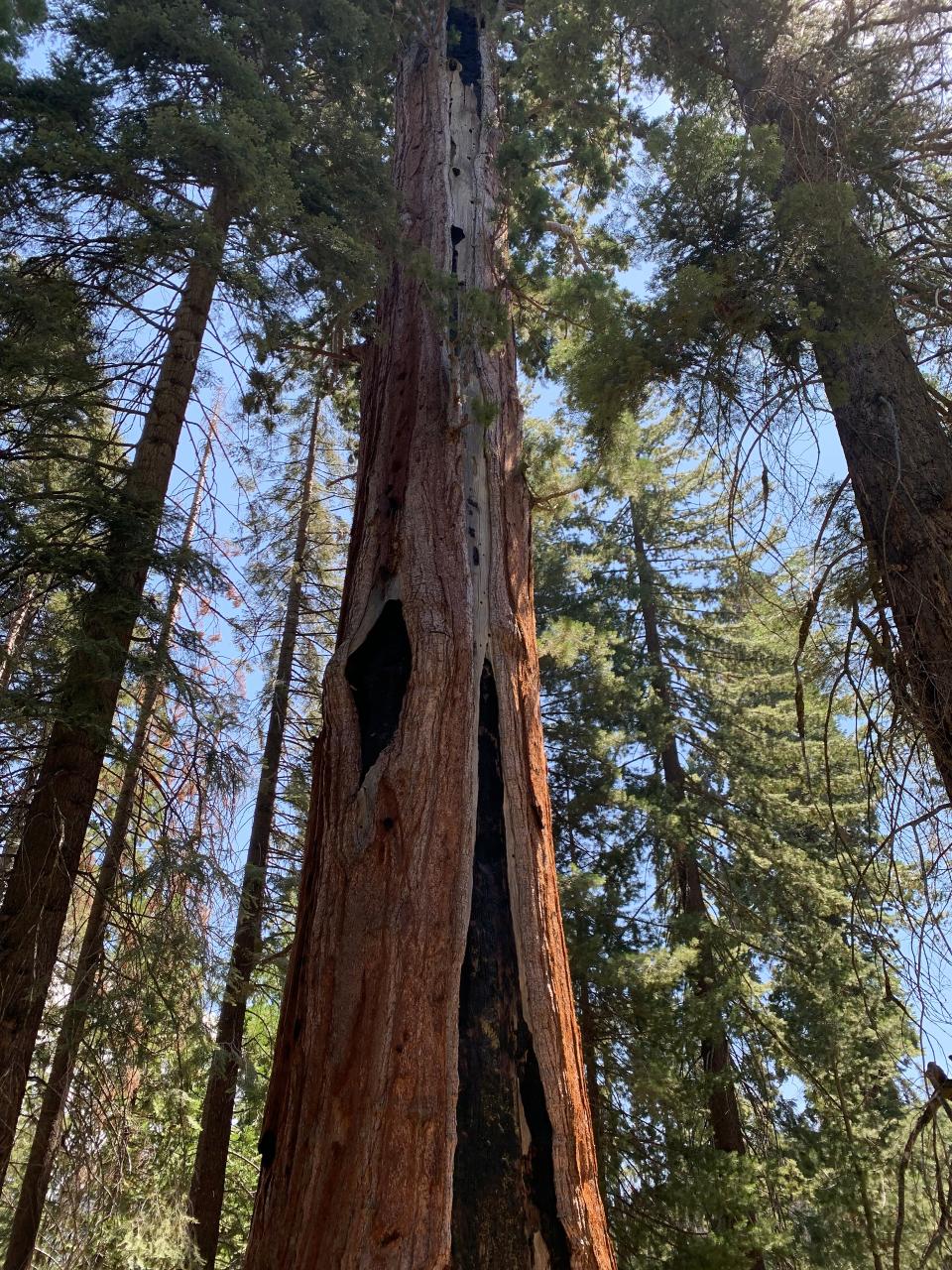
Nearly 20% of the largest giant sequoia trees in the world were killed over the last two years. All but five of the 37 giant sequoia groves in national forests throughout California have burned or partially burned in recent wildfires.
The destruction comes on the heels of 2020's Castle Fire, which torched between 10% to 14% of the world's sequoias — some 10,000 trees — in the same region of the southern Sierra. The rest were burned last year during the KNP Complex and Windy fires.
And although giant sequoias rely on low-to-moderate severity fire to reproduce, recent fires have been burning at a higher severity, damaging the iconic trees.
“We have seen fire in these groves occurring for many, many years... But as fires have gotten more aggressive, the drought has continued," Benson said. "We've been very concerned about that."
This, in part, is because of the massive amounts of fuel — sometimes topping 4 to 5 feet — have built up near the base of the sequoias over the past 50 to 100 years. Fuels can include weeds, dry grass or even fallen pinecones and pine needles.
Firefighters have gone to extraordinary lengths to save the big trees, including wrapping General Sherman's 37-foot-wide trunk in a fire-resistant wrap that brought national attention to the 2021 wildfire.
Related: After a fire-riddled 15 months, Giant Sequoias get a lifeline with a new bill
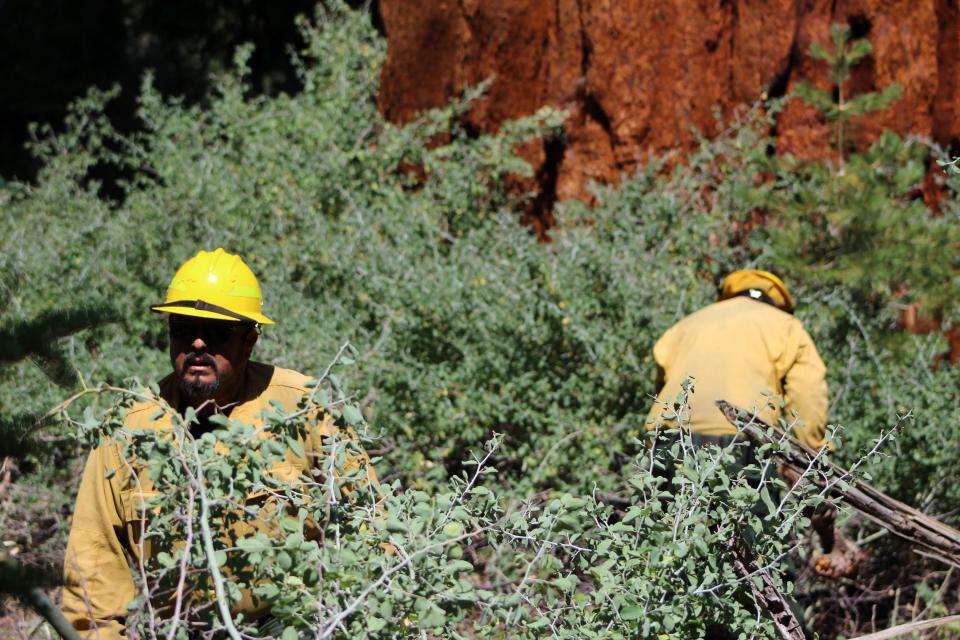
This week's emergency response allows fire crews to start clearing the fuel throughout 11 groves considered “extremely vulnerable to high severity fire” all throughout the forest.
Currently, work is underway in the Bearskin, Black Mountain, Indian Basin and Wishon groves. Eventually, fire crews will also work through the Abbott, Belknap Complex, Burro Creek, Grant, Landslide, Long Meadow and Silver Creek groves.
Crews are hard at work hand-cutting small trees, piling or lopping-and-scattering debris, as well as pulling duff away from the base of large giant sequoia trees and stumps.
Next, fire crews will use mechanical treatments to remove excessive fuels and prescribed burning where appropriate. The process will be repeated every 10 years.
The emergency response means there’s still hope, Amarina Wuenshcel, ecologist said.
“I think there's a lot of hope,” Wuenshcel said, walking down one of the Bearskin groves' paths. “And I think the Mariposa grove is case in point, you know?”
The Mariposa grove was recently threatened by the Washburn Fire, a 4,880-acre fire that broke out in early July. The grove is the largest sequoia grove in Yosemite and is home to over 500 mature giant sequoias.
“They've done a lot of work... They did a lot of prescribed burning that look beautiful," she said of the Mariposa grove, “and it did fine.”
Thankfully, no sequoias were lost during the Washburn Fire.
"(Giant sequoias) store a lot of carbon and are great habitats, but it's also an emotional loss," said Christy Brigham, chief of resource management and science for Sequoia National Park. "The only reason they're threatened now is because of climate change and poor forest management, and that to me is heartbreaking to see a 2,000-year-old tree turned into a matchstick.
Fire is an essential part of the sequoia lifecycle, causing the tree's pinecones to burst and spread seeds to the newly cleared forest floor below. Sequoias have several other adaptations that make them among the most fire-resistant species globally, including 12-foot-thick bark and crowns that grow hundreds of feet above the forest floor.
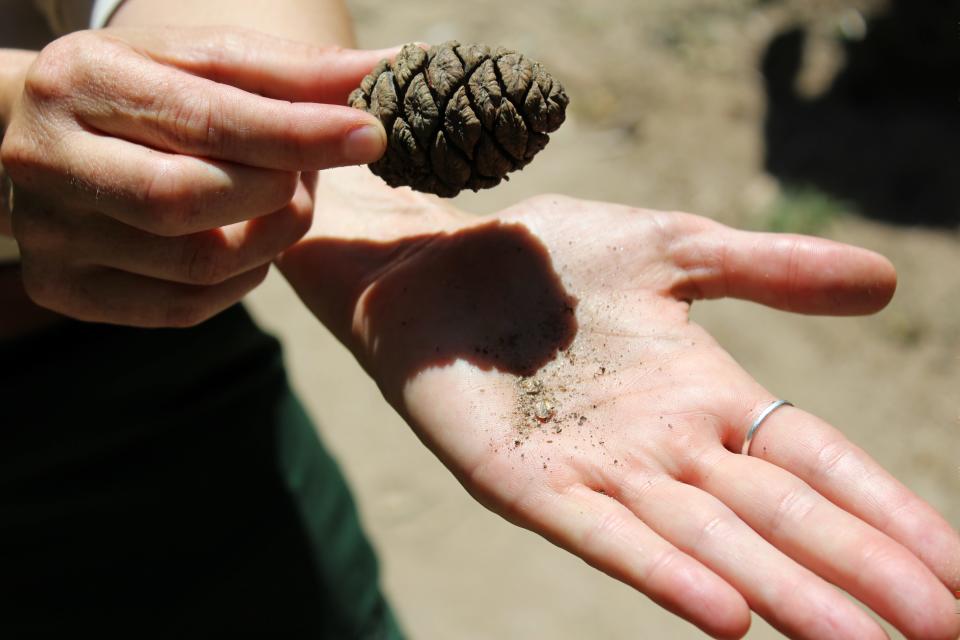
Robert Benik, fire specialist with the Sequoia National Forest, is also hopeful about the emergency response. His father and mother also worked for the forest, so he grew up surrounded by the very trees he’s now trying to save.
“We have trees that died … but we've got 10 times (the amount) that come back up underneath,” Benik said. “They (the sequoias) are really resilient."
The Washington Post this week reported that the Biden administration wants to dramatically ramp up controlled fires and logging as a way to thin out forests and avoid costly and deadly wildfires. The Biden administration announced a decade-long, $50 billion for prescribed burns across 50 million acres in 11 Western states to manage wildfire — California receiving the most.
Rep. Kevin McCarthy's Save Our Sequoias Act would fast-track environmental studies for logging and prescribed burns, in turn allowing crews to burn acres ahead of wildfire season.
Prescribed burns recently proved helpful, allowing the sequoias to avoid 2022 summer fires for the most part.
"I can understand why people would look up, see the flames, and be concerned after the KNP Complex. But this is good fire that will prevent future wildfires from burning as intensely," District Ranger Jeremy Dorsey told the Times-Delta earlier this year.
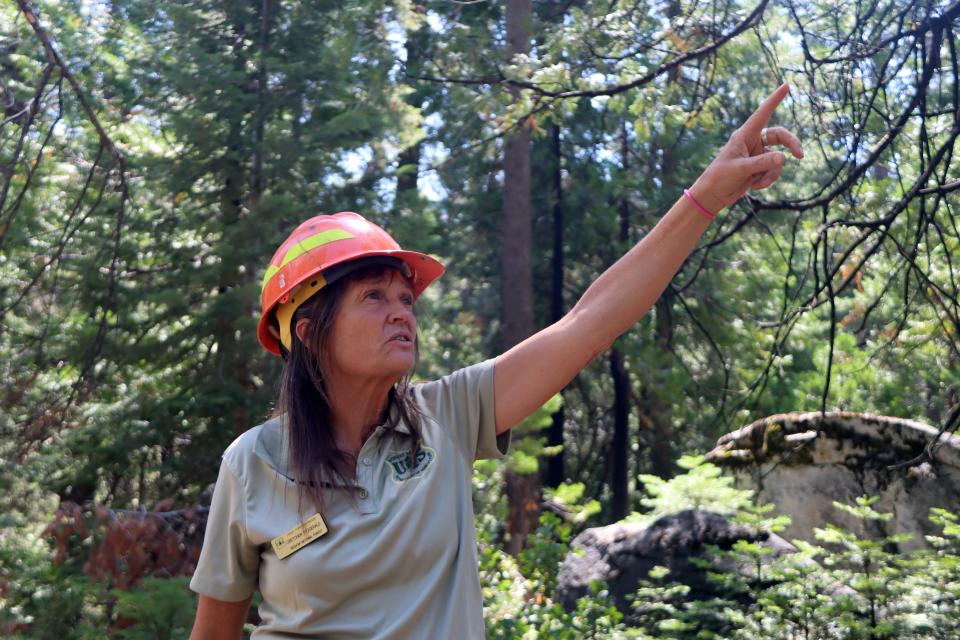
Rangers treated 175 acres in February before a winter storm temporarily halted the operation. During the prescribed burn, dozens of firefighters follow the contours of the mountain with diesel-powered drip torches, carefully lighting fallen trees and brush on the forest floor.
Controlled burns are necessary amid a record-breaking drought to remove an astonishing buildup of dead and desiccated trees and plant matter from the national park and forest landscape. The area Dorsey and his crews are treating now hasn't experienced fire in more than a century, he said. In part, because of prescribed burns, he said.
Groves treated with prescribed fire are much more resilient to wildfires, such as the KNP Complex which torched portions of the Redwood Mountain sequoia grove last fall.
Before the Oregon Trail opened the West, lightning strikes and fires set by Native Americans helped thin forests. The Post reported that it was "typical to have about 50 trees per hectare in the Sierra Nevada and southern Cascades, whereas now some forests have 300 to 400 trees per hectare," according to Alexis Bernal, a researcher with the University of California at Berkeley who studies giant sequoias.
"Protecting communities and life is our No. 1 priority, and saving the giant sequoia trees is our No. 2 priority," said Clay Jordan, superintendent of Sequoia and Kings Canyon national parks. "They're virtually irreplaceable. People come from all over the world to see these trees."
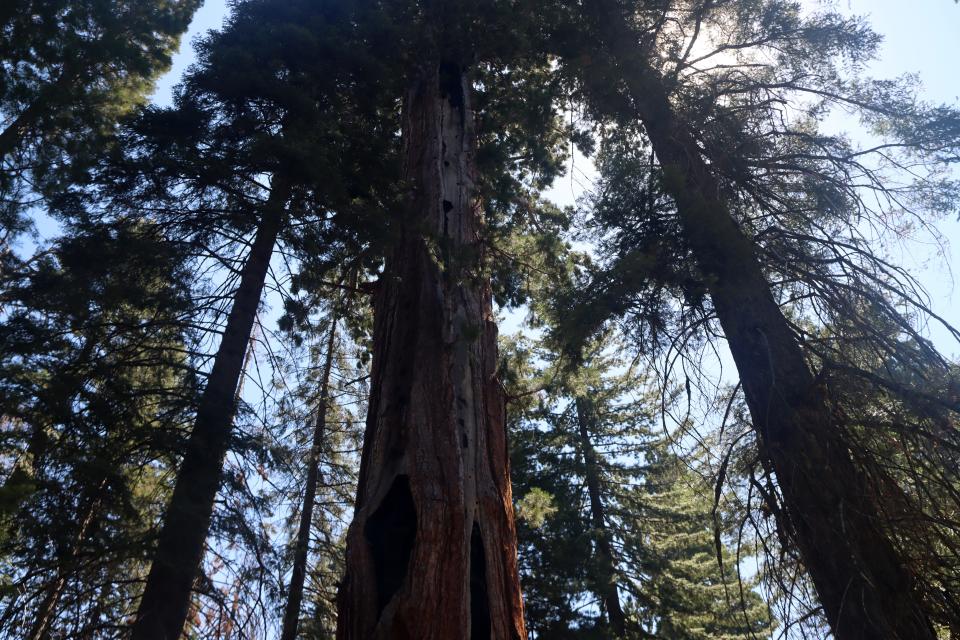
Lauren Jennings covers education and news for the Visalia Times-Delta/Tulare Advance-Register. Follow her on Twitter @lolojennings. Get alerts and keep up on all things Tulare County for as little as $1 a month. Subscribe today.
This article originally appeared on Visalia Times-Delta: Forest Service announces plans to protect giant sequoias

